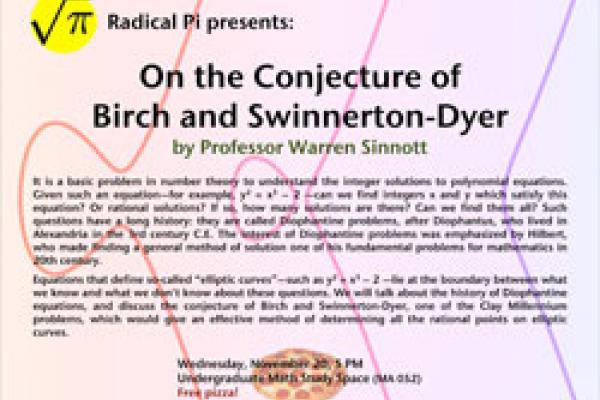
Speaker: Warren Sinnott
Seminar Website: /activities/clubs/radical-pi
Abstract: It is a basic problem in number theory to understand the integer solutions to polynomial equations. Given such an equation — for example, y^2 = x^3 – 2 — can we find integers x and y which satisfy this equation? Or rational solutions? If so, how many solutions are there? Can we find them all? Such questions have a long history: they are called Diophantine problems, after Diophantus, who lived in Alexandria in the 3rd century C.E. The interest of Diophantine problems was emphasized by Hilbert, who made finding a general method of solution one of his fundamental problems for mathematics in 20th century.
Equations that define so-called “elliptic curves” — such as y^2 = x^3 – 2 — lie at the boundary between what we know and what we don't know about these questions. We will talk about the history of Diophantine equations, and discuss the conjecture of Birch and Swinnerton-Dyer, one of the Clay Millennium problems, which would give an effective method of determining all the rational points on elliptic curves.
